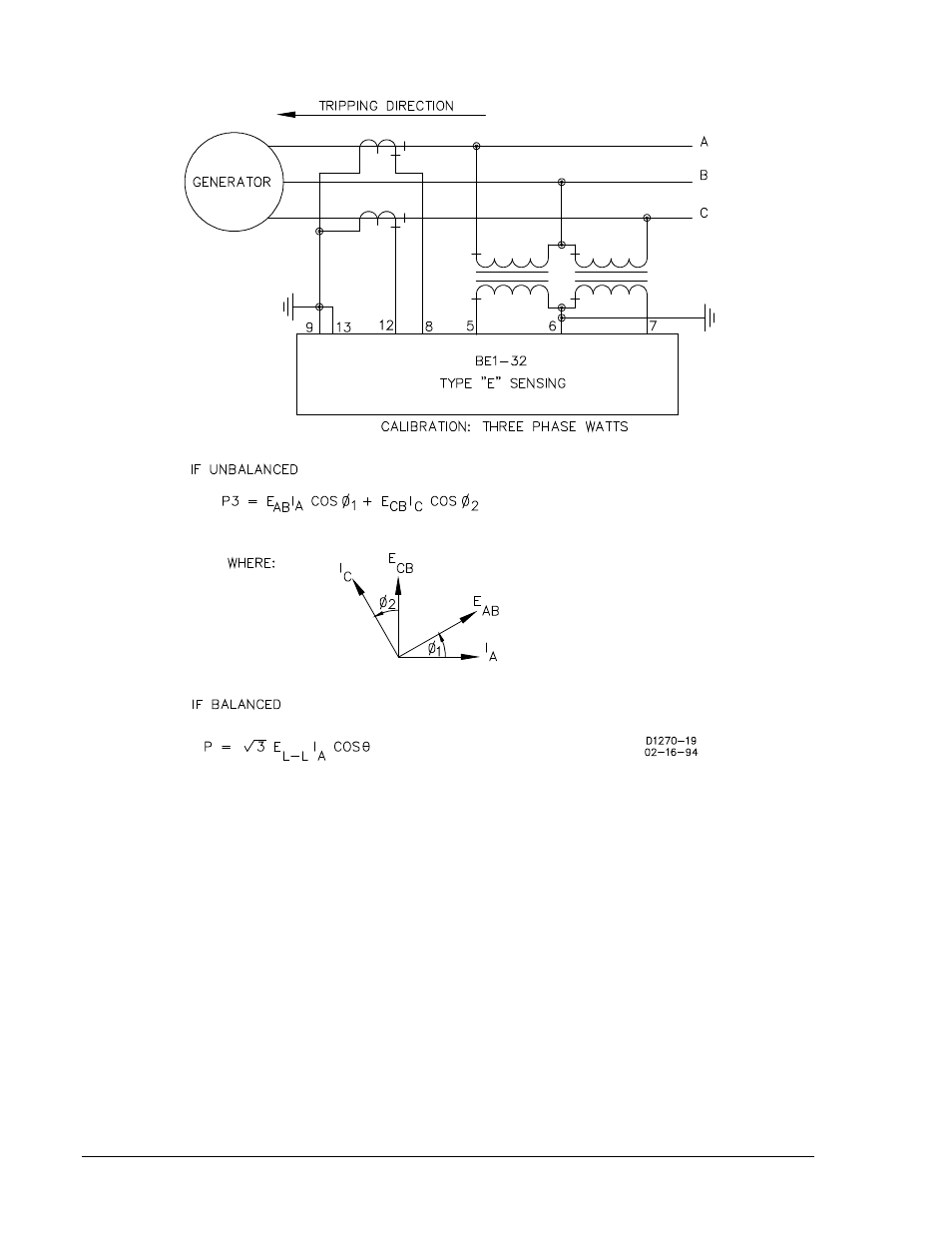Timing, Timing -6, Figure 3-10. type e sensing -6 – Basler Electric BE1-32R User Manual
Page 34

This product is not recommended for power factors below 0.10. Contact Basler Electric for recommended
products.
Figure 3-10. Type E Sensing
Timing
BE1-32R and BE1-32O/U timing is defined by the style number and can be instantaneous, definite time-
delayed, or inverse time-delayed.
A relay with instantaneous timing responds to a trip condition with no intentional time delay. For a real-
power magnitude of two times the pickup setting, overall response time is less than 80 milliseconds at 60
hertz and less than 100 milliseconds at 50 hertz. The response time decreases as the magnitude of the
input signal increases. Typical response curves are illustrated in Figures 1-13 and 1-14.
A relay with definite timing begins timing toward a trip when the power level exceeds the relay overpower
setpoint or decreases below the underpower setpoint. Overpower and underpower definite time delays
are adjusted by the corresponding Time Delay Control thumbwheel switches and the Time Delay
Multiplier switch. The definite time delay can be adjusted from 0.1 to 9.9 seconds with the Time Delay
Multiplier switch in the times 0.1 position and from 1 to 99 seconds with the Time Delay Multiplier switch
in the times 1.0 position. A Time Delay Control setting of 00 enables instantaneous timing.
Inverse timing is available only for the overpower function. A relay with inverse timing begins timing
toward a trip when the power level exceeds the relay overpower setpoint. The desired inverse time curve
is selected by the Overpower Time Delay Control thumbwheel switches. The available inverse time
characteristic curves are illustrated in Figure 1-15.
3-6
BE1-32R, BE1-32O/U Functional Description
9171100990 Rev T
